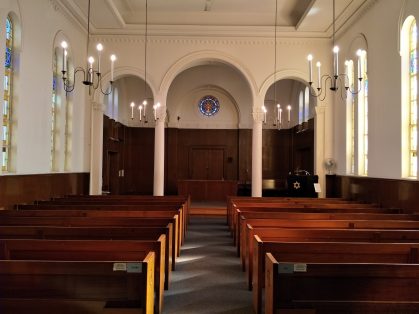Attending a Jewish Funeral with the Sydney Chevra Kadisha

Timing of the Funeral
According to traditional Jewish burial customs, a funeral should take place as soon as possible. At the Sydney Chevra Kadisha, every effort is made to uphold this mitzvah, though exceptions are sometimes necessary, such as when close family members need time to travel, or if the passing occurs on Shabbat (the Sabbath) or a Jewish festival, or in cases where it is a coronial matter.
A Few Basic Guidelines
- Punctuality: Jewish funerals begin on time. Please try to arrive early.
- Dress Code: Dress conservatively. For men, a suit or neat trousers with a button-down shirt is appropriate. For women, a modest skirt and top or dress is suitable.
- Head Covering: Men are required to wear a kippah (yarmulke). These are provided at the chapel entrance if you do not have one.
- Conduct: Out of respect, avoid idle conversation. It is best to remain quiet or join in the prayers during the service.
- Seating: Men and Women are seated separately.
- Flowers: Sending flowers is not part of Jewish tradition. Instead, one honours the deceased by simply attending, offering words of comfort, and giving charity in their memory.
- Coffin: The coffin is always kept closed, as Jewish tradition considers it improper to gaze at the deceased.
What to Expect at a Sydney Chevra Kadisha Funeral
Services organised by the Sydney Chevra Kadisha are usually held at the Memorial Hall in Woollahra, The Ohel Chaim Chapel at Macquarie Park Cemetery, at one of the non-denominational chapels at the cemetery or it may be a graveside service. It is always best to check our website for the exact time and location of the service.
A typical Funeral service lasts 20-30 minutes and may include:
- K’riah (tearing of a garment): Mourners may participate in this ritual, symbolising grief and connection.
- Recitation of Psalms and selected Biblical passages by the rabbi or officiant.
- Hesped (eulogy): The officiating rabbi will deliver words of reflection, tribute and remembrance
- El Malei Rachamim: A memorial prayer recited before the procession to the grave.
The Graveside (Levaya – Accompaniment)
The procession from the chapel to the graveside is known as the Levaya — accompanying the deceased to their final resting place. This mitzvah is central to the funeral so attendees are encouraged to move hastily from the chapel to the graveside and not to gather and socialise with family and friends.
At the grave:
- Pallbearers, chosen by the family, may carry the coffin.
- The coffin is lowered into the grave.
- Attendees are encouraged to participate in Kevurah (burial) by shovelling earth into the grave. Please note: the shovel is not passed hand-to-hand; instead, it is placed back into the soil for the next person to take.
- Mourners will recite the Kaddish, an ancient prayer expressing hope for G-d’s sovereignty and bringing comfort to the soul of the departed.
After the Burial
- At the conclusion of the graveside service, attendees form two parallel lines. The mourners pass between them and are offered the traditional words of comfort:
Hamakom y’nachem etchem b’toch sh’ar aveilei Tziyon v’Yerushalayim
“May the Almighty comfort you among all the mourners of Zion and Jerusalem.”
Please say this quietly as the mourners pass, without approaching or engaging in conversation.
- Before leaving the cemetery, it is customary to wash hands. A washing station is provided near the exits. Pour water three times alternately over each hand, then leave the cup upside down. Do not dry your hands.
